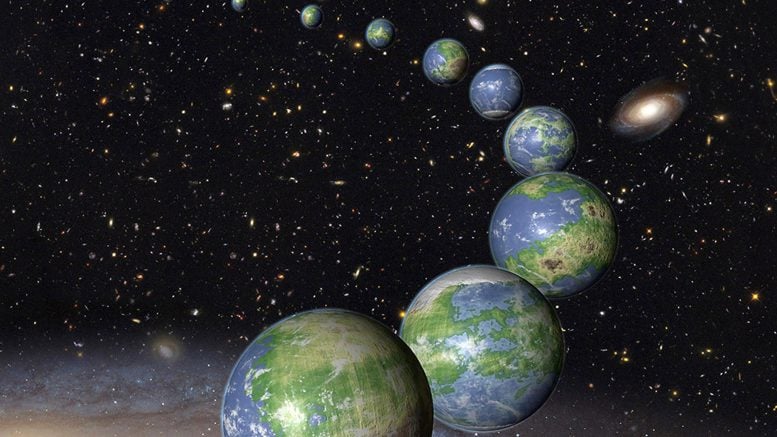
“All planets in the Milky Way may be formed by the same building blocks, meaning that planets with the same amount of water and carbon as Earth,” says Professor Anders Johansen. Credit: NASA, ESA and G. Bacon (STScI)
According to a new study from the University of Copenhagen, Earth, Venus, and Mars were created from small dust particles containing ice and carbon. The discovery opens up the possibility that the Milky Way may be filled with aquatic planets.
Astronomers have long been looking into the vast universe in hopes of discovering alien civilizations. But for a planet to have life, liquid water must be present. The chances of that finding scenario have seemed impossible to calculate because it has been the assumption that planets like Earth get their water by chance if a large, ice asteroid hits the planet.
Now, researchers from the GLOBE Institute at the University of Copenhagen have published an eye-opening study, indicating that water may be present during the very formation of a planet. According to the study’s calculations, this is true for Earth, Venus, and Mars.
“All our data suggest that water was part of Earth’s building blocks, right from the beginning. And because the water molecule is frequently occurring, there is a reasonable probability that it applies to all planets in the Milky Way. The decisive point for whether liquid water is present is the distance of the planet from its star,” says Professor Anders Johansen from the Center for Star and Planet Formation who has led the study that is published in the journal Science Advances.
Are all planets formed by ice?
Using a computer model, Anders Johansen and his team have calculated how quickly planets are formed, and from which building blocks. The study indicates that it was millimeter-sized dust particles of ice and carbon – which are known to orbit around all young stars in the Milky Way – that 4.5 billion years ago accreted in the formation of what would later become Earth.
“Up to the point where Earth had grown to one percent of its current mass, our planet grew by capturing masses of pebbles filled with ice and carbon. Earth then grew faster and faster until, after five million years, it became as large as we know it today. Along the way, the temperature on the surface rose sharply, causing the ice in the pebbles to evaporate on the way down to the surface so that, today, only 0.1 percent of the planet is made up of water, even though 70 percent of Earth’s surface is covered by water,” says Anders Johansen, who together with his research team in Lund ten years ago put forward the theory that the new study now confirms.
The theory, called “pebble accretion,” is that planets are formed by pebbles that are clumping together, and that the planets then grow larger and larger.
Anders Johansen explains that the water molecule H2O is found everywhere in our galaxy, and that the theory therefore opens up the possibility that other planets may have been formed in the same way as Earth, Mars, and Venus.
“All planets in the Milky Way may be formed by the same building blocks, meaning that planets with the same amount of water and carbon as Earth – and thus potential places where life may be present – occur frequently around other stars in our galaxy, provided the temperature is right,” he says.
Good chances for the emergence of life
If planets in our galaxy had the same building blocks and the same temperature conditions as Earth, there would also be good chances that they may have about the same amount of water and continents as our planet.
Professor Martin Bizzarro, co-author of the study, says:
“With our model, all planets get the same amount of water, and this suggests that other planets may have not just the same amount of water and oceans, but also the same amount of continents as here on Earth. It provides good opportunities for the emergence of life,” he says.
If, on the other hand, it was random how much water was present on planets, the planets might look vastly different. Some planets would be too dry to develop life, while others would be completely covered by water.
“A planet covered by water would of course be good for maritime beings, but would offer less than ideal conditions for the formation of civilizations that can observe the universe,” says Anders Johansen.
Anders Johansen and his research team are looking forward to the next generation of space telescopes, which will offer far better opportunities to observe exoplanets orbiting a star other than the Sun.
“The new telescopes are powerful. They use spectroscopy, which means that by observing which type of light is being blocked from the planets’ orbit around their star, you can see how much water vapor there is. It can tell us something about the number of oceans on that planet,” he says.
Reference: “A pebble accretion model for the formation of the terrestrial planets in the Solar System” by Anders Johansen, Thomas Ronnet, Martin Bizzarro, Martin Schiller, Michiel Lambrechts, Åke Nordlund and Helmut Lammer, 17 February 2021, Science Advances.
DOI: 10.1126/sciadv.abc0444




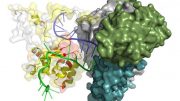
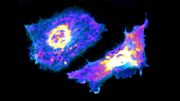
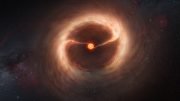

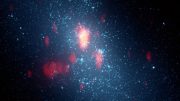
“But for a planet to have life, liquid water must be present.”
It should read, “But for a planet to have carbon-based life, it’s believed that liquid water must be present.’
All these idiots they label as scientist, astronomer, astrologer, geologist need to be dismissed from these fields of science.
If you believe the things they claim to be true or even theories, then you’re a bigger idiot than they are. Lol
Who gave these idiots the right to expose the world to the idiotic theories?
I’m not surprised that people who are descendants of cavemen would think the way they do🤣🤣🤣🤣
It’s f***in hilarious
And who the f*ck are you??? Folks like you should burn.
I think he is a human that is always watching silly videos of gaming and is playing video games all the day1
Death threats are criminal in most nations. Conversely, “Everyone has the right to life, liberty and security of person.” [UDHR, article 3.]
“What can be asserted without evidence can also be dismissed without evidence.”
Astrologer?! Imagine thinking astrology is a science.
All these idiots they label as scientist, astronomer, astrologer, geologist need to be dismissed from these fields of science.
If you believe the things they claim to be true or even theories, then you’re a bigger idiot than they are. Lol
Who gave these idiots the right to expose the world to the idiotic theories?
I’m not surprised that people who are descendants of cavemen would think the way they do🤣🤣🤣🤣
It’s f***in hilarious
WTF is life coming to🤣🤣
You are stupid! Do you even know what is sun core made of?!
If all that popped out, of the milky way galaxy, started out as 1 part carbon and 1 part water (so is that 1 to 3?? Or 3 to 1?)
Would the stars in the milky way were to have evolved first or the planets? And what brought about the different elements?
————–
0.1 of earth is water, yet that,it covers 70% of land. If that’s not proven false sounds worthy of Nobel Prize quality nomination.
I’m not sure what you are asking here.
Galaxies forms out of gas clouds, originally with mostly hydrogen and helium (and traces of light elements) after the hot big bang nucleosynthesis and so no planets. That first generation of stars were responsible for nucleosynthesis up to iron and seeded the galaxies with that, so the next generation of stars could form planets [ https://en.wikipedia.org/wiki/Nucleosynthesis ].
Are you questioning the water content by mass of Earth? I’ll just quote Wikipedia on Earth and oceans:
Earth: “Mass 5.97237×10^24 kg”
Oceans: “The total mass of the hydrosphere is about 1.4 quintillion tonnes (1.4×10^18 long tons or 1.5×10^18 short tons), which is about 0.023% of Earth’s total mass.”
Checking magnitude: A metric ton of water is 10^3 kg. So we get ocean water/total mass ~ 10^21/10^25 ~ 0.01 %.
The mass of water in the mantle is unknown, but a common figure is “one ocean worth”, in which case we get ~ 0.05 % of Earth mass would be water from Wikipedia references. The estimates IIRC vary between 0.5 – 5 oceans, so Johansen’s figure sits comfortably in the middle of that interval.
Why the rush of excitement? I don’t care how many earth-like planets tech finds, not one of you or your descendants will ever set foot on any of them!
Jesus will return to snuff this planet long before your hopeless dreams of escape ever pan out!
Irrelevant superstition.
Really? Please share with everyone how you know when Jesus is returning? Countless numbers of self declared followers of Jesus have claimed witness to this knowledge throughout roughly the past two thousand years. To date, all have come and gone to no avail. In fact, to say so certainly when His return will be is purely speculation. Worse, your speculation is based upon speculation. In fact, Jesus was absolutely clear. We are not to speculate. To be clear, it means do not form a theory or conjecture about a subject without firm evidence. Oh, as the case may be that you have forgotten, I’m glad to be able to remind you that the world is without end. According to the most accurate historical record available, this information comes directly from Jesus. We have his word. So, the good news is this realm will not be totally “snuffed out” although that’s doesn’t mean a believer such as yourself won’t become so wrapped up in speculation as to invite a proletariot insurrection of some sort which gets out of hand and escalates into enough of an international crisis to pass muster as armageddon. That aside, the science based evidence which is cause for the hypothesis regarding billions of earth like planets rather clearly does support Jesus’ teaching. Not to change the subject, but a couple of credible publications have fairly recently reported how science has proven God exists. Using your line of reasoning, somehow, Jesus will be returning long before your posterity seven generations from yours will be left with no alternative other than to refrain from further speculation. Okay, gotta split, I hear someone knocking at the door. From the place that loves you back, beginning with the State of Independence.
Detente aus,
#saymyname
But would the other planets be in our galaxy, or the multuverse theory?
But would the other planets be in our galaxy,and the multuverse theory?
A gaming video that doesn’t help anyone gets hundreds of comments but scientific research like this gets 10!
Conditions for water to form are very precise. Shuttle missions have released water while in orbit and brought back in with a scoop. They found ozone and hydrogen crystal.
There is many formation pathways, but the proof is in the pudding – most asteroids contain several percent of water. (It is Earth that is water poor.)
Thanks for the “stellar reporting”. Blah. An article authored by the University employing the phds and claiming a computer model to be a “study”. No wonder trust in science, and in particular science writers and publications, is at an all time low. Poor work.
Yawn. Trolls never change tune.
Pebble accretion has the advantage that it can form planets fast, on time scales that are observed, and in the new model naturally so for terrestrial planets as well as gas giant cores in relation to condensate regions. And it makes some sense out of meteorite isotopes.
However other possible mechanisms can do that last bit, including generically provide hydrogen and oxides for terrestrial planet water. And all generic models have problems with Mercury.
We have to wait and see how this field sorts itself out.
Don’t forget that GOD had “just a little bit to do with this!”
Secular nonsense…
Your’s is an irrelevant superstition.
We can only see what’s out there,but we will never b smart enough to travel out there or ever off our planet.
It is sad that any if not all civil conversations are disrupted by people bringing their religious beliefs into the mix as a way of disrupting or trying to silence others in the scientific community. Notice the laughing face emoji; as if religious beliefs are facts. All of them believe that their God is the only one; so before engaging in scientific conversations why not come back to the table when all of you have figured that out !
Does anyone really know why are we here? What are we here for?
Yes. We are here to better ourselves.
Science is proving and religion is believing by faith. But no one can doubt there is God if you never met magical and spiritism or witchcraft then you believe there is no God. But the existence of all these prove there is super powerful being out there who is the greatest of the greatest in everything. The existence of everything we see in on this earth and it enviroment or call it the universe or the galaxy a prove that there is a maker. Even archeological discovery prove that there was some group of people who once lived there because we can trace them to our time if not we called it mith . There exist creator if not there is no hope for mankind for we will accidentally disappear as how we accidentally come definitely. 🤣🤣🤣🤣 Even the internet and emogy I posted are not here accidentally is someone that designs them. Creation continue from a start of point know where it start from . Thanks my little opinion.🤥🤥🤥🤥🤥🤔
There should be a planet in this vast universe which has water. Can only our Earth has water? A very silly question to answer indeed with our universe having billions of planets.
It is just as humanbein are there and other animals and plants are, so are variety of planets .Anyway no religion state earth only exists.
Don’t need a title or need to be a scientist. If there’s a star, chances are there are planets orbiting. All it needs is a planet at a perfect distance to be able to contain life. A single star can contain couple planets that contain life. Billions of stars, billions of possibilities for life on planets. Billions of planets, uncountable number of alien races (we are also aliens). The bigger the star, the bigger the planet and even the species within the planet will be different in shape and size. We are by far the most unintelligent race in our galaxy. Fighting over color, posts and even social media. Just pathetic. And we have people who still think we are the only ones in the galaxy 😂😂 they live within a box of fear from knowing the truth. Accept the truth and move on
you scared little alien
Wisdom is the prisoner of limits and balance,beyond it is lost in wonders and infinity.Science can not disprove God,but God can overturn all physical laws and Godless nuts can not imagine the Ultimate Truth”GOD”….
Why does it have to have water? Other life might breathe hydrogen and drink liquid ammonia for all we know. We just assume that everything is made just for us. We need water, and it contains oxygen, but we can’t breathe underwater;some creatures do both for example.
And other life probably won’t have any interest in us anyways, we can’t even get along with each other. Just because of color and beliefs, you think they’re gonna hurry to introduce themselves to us when we don’t even like ourselves?
You want to know how the planets came about? Including the number and constituents?😳
Then read the Bible book of Ecclesiastes 3:11 and Romans 1:20.
Those words has been penned down about 3000 years and 2000 years ago respectively.
Mankind will never come to understand all the works of OUR creator from beginning to finish.
That’s why the said scientists always live on speculations.
Genesis Chapter 1 also proved that liquid (water) has always been one of the important sources of not only the planet earth, but of life
That’s as far as Human intelligence knows
these theories pushed out into the public are not true and cannot be proven but yet they are spoken of as if it were truth . All these theories are designed to capture the imagination of the people and have them ask their selves what if it was true and by doing that you have to start to question your belief in God the Father . God is Love and He created all things through His self and by His Perfect Faith were all things made manifest which came from that which is unseen .
For this theory to be correct, that every planet has the same amount of water, would also have to hold true to the moons that form around said planets. The moons (usually) form at the same time as the planet forms, lets take Jupiter for example A.
This would mean the largest moons would hold the most water, as they hold the most mass. Yet Europa is about one third water, with a rocky core. Io is a volcanic world, constantly erupting, so very very little water there. The other two major moons Ganymede and Callisto are believed to be made of about half water ice and half rocky mass, with Callisto on the lower 40% water to 60% rocky material.
Example b, actual planets themselves. Jupiter and Saturn are called gas giants because they are mainly made of gas, and although they do contain some water traces, it is nothing a percent would make sense of based on the amount of other gases present. These two are easy to explain away at this model, the water could and would interact with other chemicals to make things like sulfuric acid. On the other hand, the ice giants, named from being made of mostly ice, do not fit this theory.
Uranus is made of 80% ice, most of it believed to be water ice. So again, this theory that all planets in a solar system have the same amount of water is incomplete.
Actually, the farther away from our star you go the more abundant water is in objects. This makes sense if you think back to when our star formed. It exploded into life, pushing the gases it was feeding on away as it did so. This explosion would be counteracted by gravity, so it would push most on things with little to no mass. Hydrogen and oxygen are light chemicals, thus they are on the top of the periodic table. Silica and other rocky materials are denser, so wouldn’t go as far when being pushed by this star formation. Thus you get lots of rocky material left closer to the star, and lots of lighter material pushed outwards, gases.
Then everything condenses to form planets and such. This theory says the rocks left behind would hold lots of water, as water has lots of mass. Yet our own measurements say there is way more water out past the asteroid belt then there is in the interior. The math I just gave of the moons and planets proves this point. So I have to disagree with this pebble theory, as if it was that easy someone would have stumbled upon it by now. This also doesn’t even begin to explain some of the exoplanets we have found, but that’s a tale for another day.
The mass bombardment theory is the leading theory on how water got here, and there is plenty of good evidence it is true. The moon is pot-marked from this bombardment, and several craters are known to hold water ice at their bottom, where the comets core would have hit. It is believed this water is partly still from the comets that hit, not from it raining or snowing on the moon…
As for space exploration, let the robots do it. That’s really the sad part of Earth. We’re waiting for a human savior when the robotic technical world is just waiting there for humans to knock on the door. So far all they do is programmed labor when they are capable of so much more.
If we wait for humans to take the plunge we will be here an eternity with random casualties.